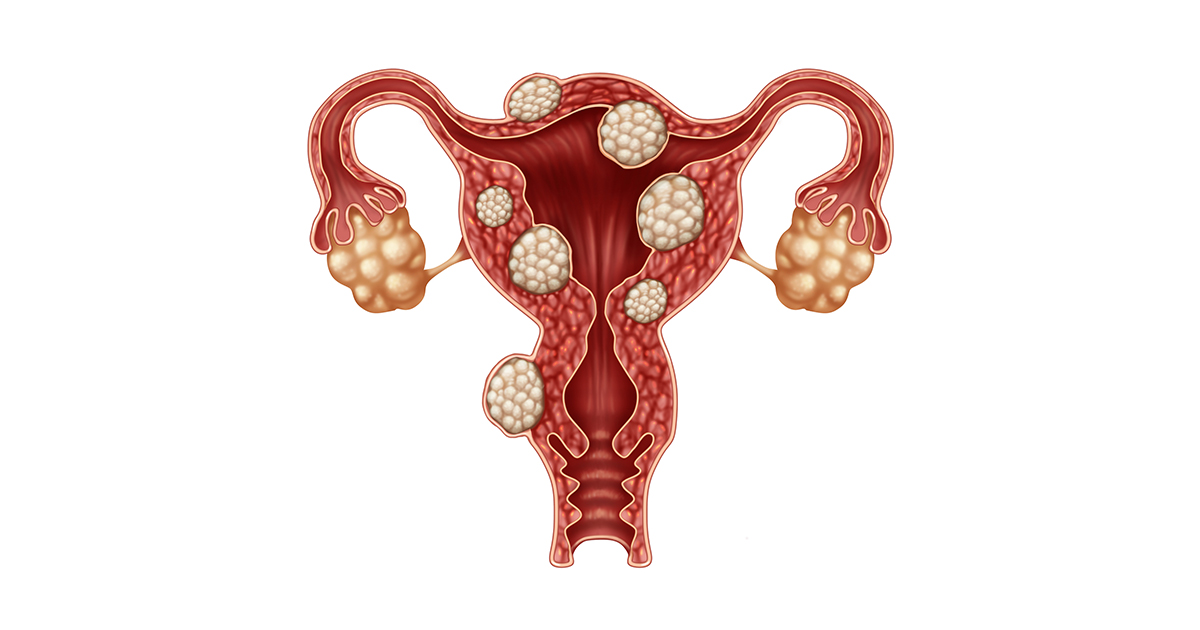Uterine fibroids: Symptoms and treatment

Fibroids, also known as myomas or leiomyomas, are incredibly common. Estimates vary, but as a general rule, at least 30% of women have them by the time they reach menopause – and those are the ones we can see on an ultrasound. Hysterectomy or autopsy studies estimates go as high as 80%.
For being so common, few women know what they are. Fibroids are solid, noncancerous growths that come from uterine tissue. If you've pet an old dog and felt fatty lumps under his skin, fibroids are kind of like those – they exist and increase with age, but most of them don't matter.
Some of them, however, cause uterine pain and heavy bleeding. Fibroids are completely separate from the ovaries or ovarian cysts.

The three places uterine fibroids can be found
Symptoms depend on a fibroid's size and placement. Fibroids can be in three places: the middle of the uterus, where bleeding occurs and babies grow, the muscle layer or on the outside.
- Bleeding layer fibroids: The fibroids in the bleeding layer tend to matter the most. Imagine squeezing water out of a washcloth: if you put a pinecone in the middle, the shape becomes awkward, and it becomes harder to clamp down around it and squeeze the water out. These tend to lead to heavier periods.
- Muscle layer fibroids: The fibroids in the muscle layer may or may not matter. Most of them, especially if they aren't large, are like putting ping pong balls in a down comforter: they exist, and you may be able to find them, but they shouldn't affect sleep (or bleeding, or fertility). If they get larger and change the shape of the uterus, they certainly may cause pain or worsen bleeding, but many don't.
- Outside of the uterus: Fibroids on the outside are getting a piggyback ride. They don't affect bleeding or fertility, and they only tend to matter if they get so large that they cause pressure or pain.
Treatments for fibroids
How we treat fibroids depends on their location and size, as well as your fertility goals.
Fibroids inside the bleeding layer often need to be treated. Fortunately, many times they can be treated with a same-day surgery that doesn't require any skin incisions. A camera goes through the vagina and cervix to look in the uterus. We then shave down the fibroid, until the shape of the uterine cavity is normal again.
For the fibroids in the muscle layer or the outside of the uterus, we personalize treatment for each individual. Sometimes, the best answer is to help lighten periods with medicines. For people with large, problematic fibroids who desire future pregnancy, we can take out just the fibroids, but that requires major surgery. Unless future fertility is a goal, we usually don't remove just the fibroids – ironically, taking out the uterus is safer than taking out just the fibroids. But hysterectomy isn't the only option. Other minor surgeries may be helpful, as are combinations of medicine and surgery.
Fibroids are common. They deserve knowledge and discussion, but not fear. They are also treatable. If you have questions about them or wonder if they might explain your symptoms, please don't hesitate to reach out. That's what we're here for.
Call 800.922.0000 to schedule an OB-GYN appointment today.







